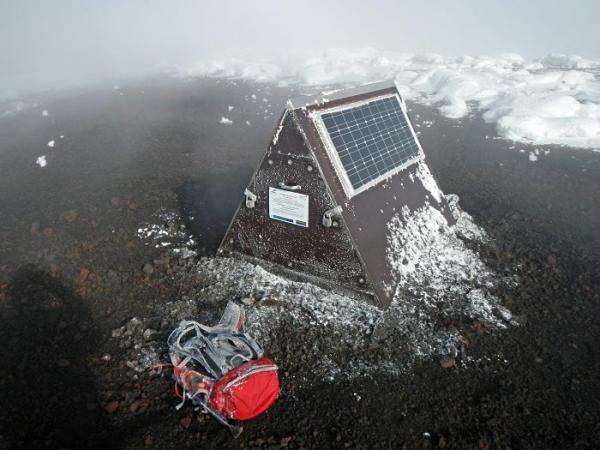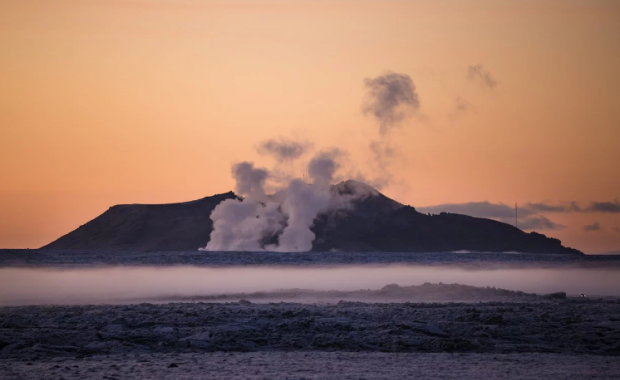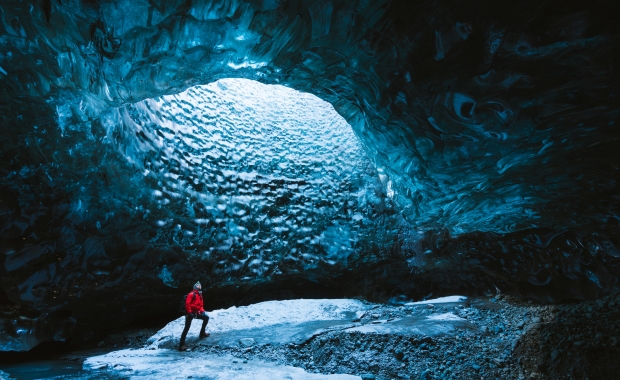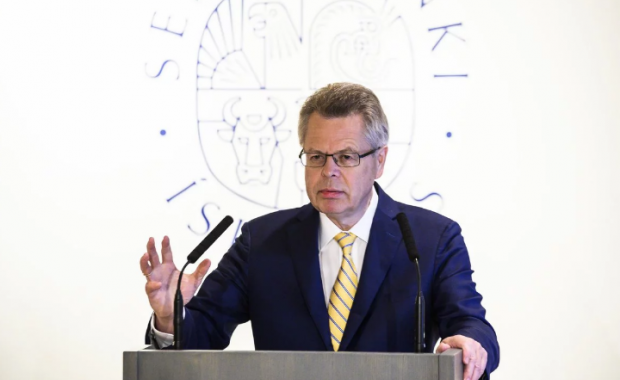It’s one of Iceland's most notorious volcanoes and scientists have been anticipating it to erupt at any given moment for quite a few years now. Nevertheless Mt. Hekla is a still drawing a steady daily traffic of hikers. And we can understand why. The majestic volcano stretches to 1,491 m (4,892 ft) and the relatively easy hike offers a fantastic view over South Iceland.

Because of the imminent danger we can’t recommend a trip to Hekla’s top. However if you are planning a trip please study thoroughly the information sign by the Hekla's main walking path so that in case of an eruption you know how to react.
Not if but when
It’s not a matter of if, but when Hekla will erupt. It is the most active volcano in Iceland, and has erupted on average once every ten years since 1970. The most recent Hekla eruption was in 2000, but the volcano has erupted between 23 times since 1104. The eruptions are difficult to predict, but the general correlation is this: the longer Hekla remains dormant, the larger and more catastrophic its next eruption will be.
Scientists keep monitoring Hekla very closely trying to predict as soon as possible an impending eruption. Those in the area will receive a warning text message to their mobile phones, but as telecommunication coverage is not 100% on the mountain there is no guaranty that all can be reached.

Hekla is part of the The FutureVolc project, which is a 26-partner project funded by the European Commission in 2010, which “seeks to integrate research on volcanic eruptions, monitoring systems, preparedness, and response”. The Institute of Earth Sciences at the National University and The Icelandic Met Office (IMO) lead the project. The study also includes other of Iceland’s most active volcanoes: Bárðarbunga, Grímsvötn, Askja, Katla, and Eyjafjallajökull.
Danger to jet traffic
As we reported last year, Páll Einarsson, a professor of geology at the University of Iceland wrote to the Icelandic Transportation Authority, in 2014, warning that passenger jets should be diverted away from Hekla. Páll believes that the risk should be taken seriously.
“Airplanes flying straight above the volcano are in danger if they fly into the ash plume. An eruption in Hekla does not need to melt its way through a thick glacier, so the plume will immediately rise with full force and climb ten kilometres (33,000 feet) into the upper levels of the atmosphere,” Páll told the local newspaper Morgunblaðið.
The Transportation Authority believes there is no danger but Páll points out that not only is the risk very real, it is extremely simple to eliminate it. The path of airplanes only needs to be shifted five kilometres (3 miles) from the volcano.
It’s one of Iceland's most notorious volcanoes and scientists have been anticipating it to erupt at any given moment for quite a few years now. Nevertheless Mt. Hekla is a still drawing a steady daily traffic of hikers. And we can understand why. The majestic volcano stretches to 1,491 m (4,892 ft) and the relatively easy hike offers a fantastic view over South Iceland.

Because of the imminent danger we can’t recommend a trip to Hekla’s top. However if you are planning a trip please study thoroughly the information sign by the Hekla's main walking path so that in case of an eruption you know how to react.
Not if but when
It’s not a matter of if, but when Hekla will erupt. It is the most active volcano in Iceland, and has erupted on average once every ten years since 1970. The most recent Hekla eruption was in 2000, but the volcano has erupted between 23 times since 1104. The eruptions are difficult to predict, but the general correlation is this: the longer Hekla remains dormant, the larger and more catastrophic its next eruption will be.
Scientists keep monitoring Hekla very closely trying to predict as soon as possible an impending eruption. Those in the area will receive a warning text message to their mobile phones, but as telecommunication coverage is not 100% on the mountain there is no guaranty that all can be reached.

Hekla is part of the The FutureVolc project, which is a 26-partner project funded by the European Commission in 2010, which “seeks to integrate research on volcanic eruptions, monitoring systems, preparedness, and response”. The Institute of Earth Sciences at the National University and The Icelandic Met Office (IMO) lead the project. The study also includes other of Iceland’s most active volcanoes: Bárðarbunga, Grímsvötn, Askja, Katla, and Eyjafjallajökull.
Danger to jet traffic
As we reported last year, Páll Einarsson, a professor of geology at the University of Iceland wrote to the Icelandic Transportation Authority, in 2014, warning that passenger jets should be diverted away from Hekla. Páll believes that the risk should be taken seriously.
“Airplanes flying straight above the volcano are in danger if they fly into the ash plume. An eruption in Hekla does not need to melt its way through a thick glacier, so the plume will immediately rise with full force and climb ten kilometres (33,000 feet) into the upper levels of the atmosphere,” Páll told the local newspaper Morgunblaðið.
The Transportation Authority believes there is no danger but Páll points out that not only is the risk very real, it is extremely simple to eliminate it. The path of airplanes only needs to be shifted five kilometres (3 miles) from the volcano.






